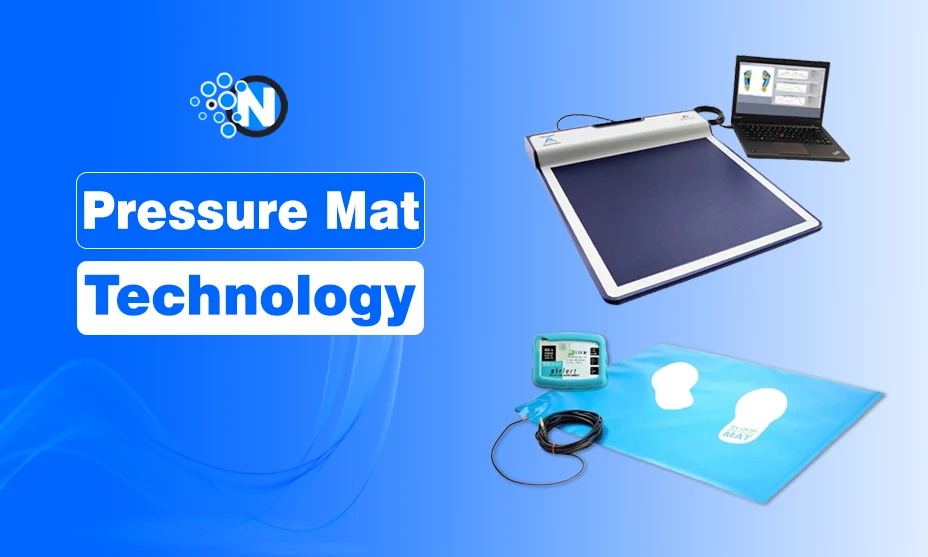Pressure Mat Technology: Improved Safety and Convenience

Do you know how hospitals can prevent their patients from falling out of bed? Or how factories can keep employees safe near dangerous machinery? Perhaps the solution lies right beneath your feet—in the form of pressure mat technology.
This amazing innovation is changing the world of safety and convenience in every field-from healthcare to home security. Let’s talk about how these apparently plain mats change life around us.
Understanding the Technology Behind Pressure Mats
Let’s first know how the magic works with pressure mat technology. Basically, a pressure mat is an engineered system that responds to the presence of physical pressure or weight that is applied upon its surface.
How it is Structured
A pressure mat usually consists of several distinct layers, each with a different purpose. The outermost layer is made of heavy-duty materials such as rubber or industrial-grade vinyl, designed to withstand constant foot traffic and protect the internal components. This layer needs to be flexible enough to allow pressure transmission while being tough enough to resist wear and tear.
The layers under the protective layer contain two electrically conductive layers that are separated by a very small gap or by some special material. In such layers, these components are present:
- Conductive plates or mesh consisting of copper or other conductive polymers
- Spacing elements special that, under zero applied pressure, will hold the surfaces with good electrical conductivity apart
- Electrical connections at which signal is forwarded to the control unit
The bottom layer serves the structural purposes of insulation and protects the inner components of the mat from moisture and the impact of ground contact.

How it Senses Signals
Pressure mats mainly employ two sensing mechanisms: resistive and capacitive sensing. In the resistive sensing, pressure forces the two conductive layers together so that electrical connections are formed at contact points whose resistance the system then measures.
Alternatively, capacitive sensing uses two charged conductor plates separated by a small distance. When pressure is applied, the distance between plates changes, altering the capacitance, which the mat’s electronics detect and translate into pressure measurements, offering enhanced durability and sensitivity without requiring direct conductor contact.
How it Processes Signals
The internal circuitry of the mat processes pressure signals step by step.
Digital signals are acquired out of the special circuits that capture the change in electrical properties. Here, the received signals get filtered for noise and false triggers by the microcontroller and undergo some predefined threshold operations to validate pressure events.
Finally, the processed data is converted into appropriate output signals. This could be simple on/off triggers, graduated pressure measurements, or even location-specific information.
Now, if you think this technology couldn’t get any better, then you should know that it also has customization features. For instance, pressure mats sold by frequencyprecision.com and other vendors can let you adjust sensitivity and have zoning capability for optimal results.
Now that you understand all the technicalities, it’s time to consider how the pressure mat technology is used.
Making Healthcare Safer for Everyone
One of the most important applications of pressure mat technology is in healthcare settings, where patient safety is paramount. Imagine a grandmother recovering from surgery in a hospital room. The medical staff can’t be by her side 24/7, but they need to know if she tries to get up without assistance. This is where pressure mats become invaluable.

These mats, placed beside the hospital beds, act silently as watchdogs that immediately alert nurses when a patient steps onto them. This is one early warning system that has dramatically reduced fall-related injuries within hospitals and nursing homes.
Healthcare providers report that they have had significant reductions in patient falls since they implemented pressure mat systems, which not only prevent injuries but also speed up recovery times.
Protecting Workers in Industrial Settings
In an industrial setting, where heavy machinery and automated equipment run continuously, safety for the workers is of utmost importance. Pressure mats act as invisible barriers between employees and dangerous equipment.
When a worker steps into the safety mat surrounding a hazardous piece of machinery, the machinery shuts down on its own to prevent accidents from arising.
For example, in automobile manufacturing plants, robotic welding stations are typically covered with pressure-sensitive mats. In case a maintenance worker needs to access the robot, the mat detects his presence and immediately stops the operation to create a safe zone for inspection or repair.
This integration of pressure mat technology has significantly reduced workplace accidents and helped companies maintain compliance with strict safety regulations.
Advancement of Home Security and Automation
Pressure mat technology has been improved to the extent that it benefits us in our homes, especially in modern security systems. As opposed to typical security measures around windows and doors, pressure mats can be set in strategic areas around your premises to detect movements.
Imagine placing a pressure mat under your welcome mat or along a pathway that is most commonly used into your house. When an unknown visitor steps into these areas, you will be immediately notified by your phone about the presence of a potential security threat.
What’s particularly clever about this application is that these mats can be completely hidden from view, making them an invisible yet effective security measure.
But pressure pads are also making our homes smarter in another way: security. In fact, when connected to a home automation system, pressure mats can perform a string of convenient actions.
Step into one installed near your front door and your lights come automatically. Install one next to your bed so it comes on softly when you get up in the night, making it easier for occupants to find their way without waking others up.
Real-Time Monitoring
The most innovative aspect of new pressure mat technology is that it permits real-time data and monitoring. In the health sector, it allows movement patterns to be monitored over time so that it alerts the medical staff on possible health issues before it turns into a significant problem.
It will measure not just presence or absence but also weight distribution and movement patterns, offering a lot of information for a medical assessment and treatment planning.
In the retail environment, pressure mats may track customer traffic patterns, so store owners could optimize their layout and improve shopping experience. In fact, space utilization through this data-driven approach helped businesses increase efficiency and enhance customer satisfaction.
Looking to the Future
Pressure mat technology continues to advance, and we’re witnessing new exciting applications emerge. Researchers are working on developing smart pressure mats that can distinguish between various types of movement patterns. Potentially, it can identify a specific individual or detect unusual behavior patterns that may indicate health problems or security threats.
The integration of artificial intelligence and machine learning with pressure mat systems is opening up even more possibilities. These systems are becoming better at understanding context and making more sophisticated decisions about when and how to respond to detected pressure.




